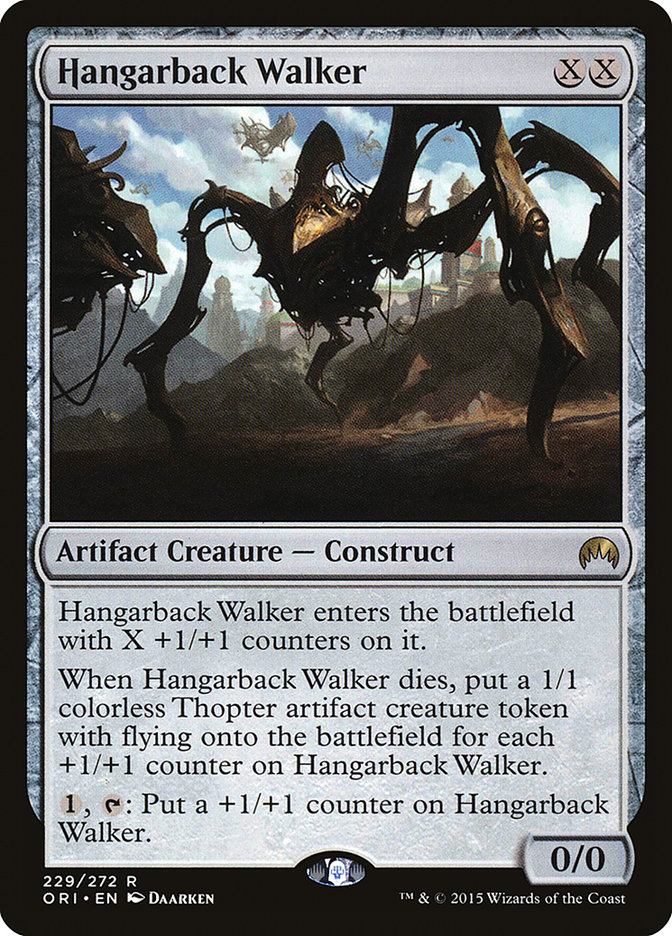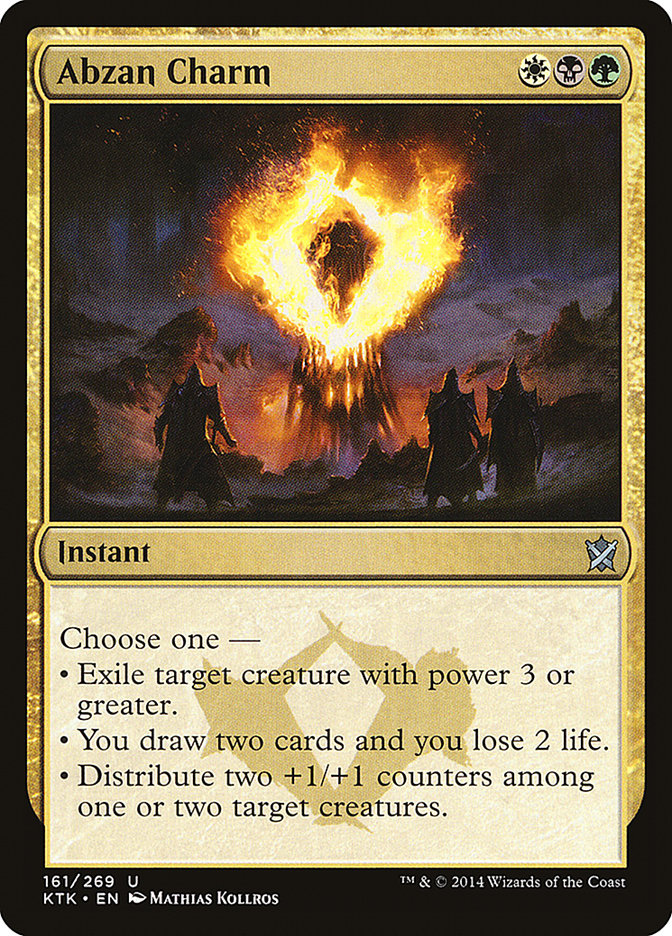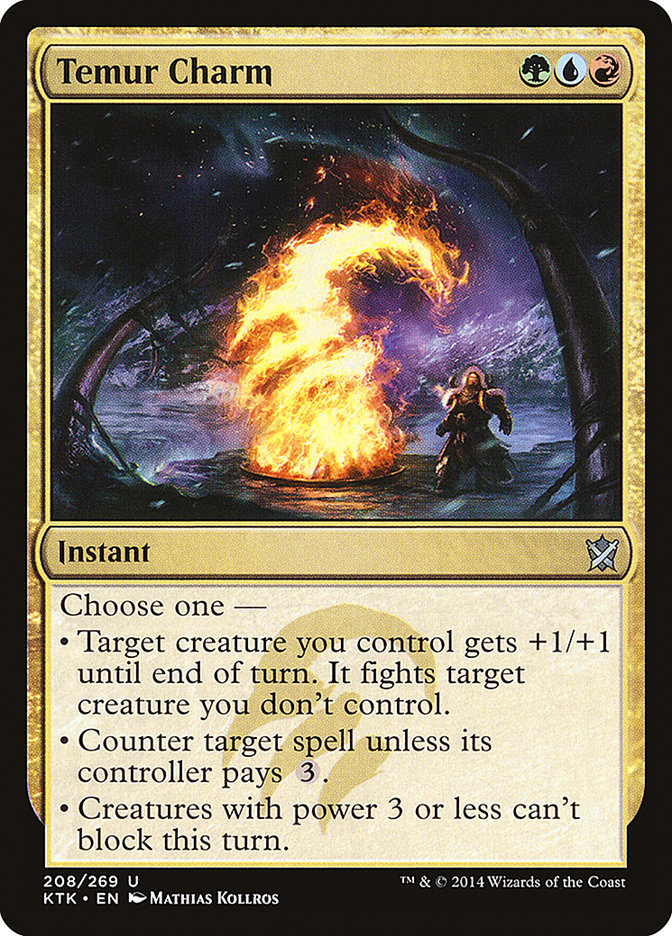Above all else, Magic should be fun.
A couple weeks ago, our own Danny West shared yet another thought-provoking article about the state of
fun in Magic, and I pored over it, absorbing concepts I’d tried to put into writing for years. In brief, Danny talked about how players sign an invisible
contract when they sit down to play Magic. These contracts have terms, generally defined by what each player finds fun in a game of Magic. Every player has
such terms, and discovering what yours are constitutes a critical step to becoming the Magic player you were meant to be.
These contracts are often aligned across a particular sample of players. Take a Pro Tour. Everyone there (with the exception of Conley Woods maybe), has a
desire to build the best pile of cards that interact with the widest range of opponents the most frequently. This is a known quantity of Pro Tour deck
construction. The same could be said for any large-scale competitive tournament, but it’s never truer than when so much is on the line. Every
player at these events understands that and plays to that contract, so everyone (generally) has a good time in their matches because they’re all there
operating under the same unwritten rules and assumptions. They understand their opponent will do anything to put a win in their corner to the
exclusion of everything else.
If you examine an FNM, though, you’ll find this is not always the case. Players not only have more limited card pools, but they have widely differing
goals. Some are just trying to play their decks to see how they are, or some know they won’t win, but they have something that they want to do in a game of
Magic with an opponent present, even if it’s just once in a dozen games. Others still have thematic elements that they love and will always play regardless
of subjective viability in the metagame; we all know someone that will always play Mono-Red, Esper Control, or a combo deck, even if the most prevalent
decks can sidestep their plan.
All of this comes back to one point, though; every player has this contract, and today I want to share my contract in terms that Danny West’s insight
helped me finally vocalize.
Above all else, I love to use cards that no one else uses. I like to pull cards from the depth of the Constructed formats in which I build, creating new
interactions, bizarre synergies, and leveraging my knowledge of the game’s mechanics to create fun, exciting, and above all, unique decks to play at every
event from a casual Wednesday Game Night all the way to an SCG Open Series, GP, or PPTQ event. This is the bold, underlined clause of my contract.
When I sit down to play with an opponent, this is what I want to do. Chances are, their contract will not include the same terms as mine. Sometimes, I’ll
fight opponents who prefer playing only the most well-tuned decks over and over; when this happens, I will start to feel bad for myself. I’ll even say
things like, “why aren’t people more creative with their decks?” This question, however, is flawed. They are playing to enjoy the intricacies of well-tuned
decks, powerful interactions, and hours and hours of personal or implied testing through the help of the community. That’s their point in playing, and it
is wrong for me to assume they would or will share my terms. People play how they like to play, whether at the casual or the competitive level.
Truthfully, most of the fun I experience in playing Magic is in creating decks. I put a lot of personal investment in creating unique decks, and
thus, I enjoy playing with opponents who feel the same way, always brewing, tweaking, and seeking that new spell or creature. Finding those players is
important to my enjoyment of the game.
That all sounds great, but what’s a good way to quantify the decks I build or that I find in the community? Well, problem solved! Introducing…
The West-Higgs Scale of Constructed Fun
Danny West to the rescue again! He implicitly understood the meaning of “fun,” as he saw it, and assigned a quantitative value to both his own and his
opponents’ decks to more objectively gauge their “fun.” (As a sidenote, Danny and I are pretty well aligned in terms of Commander fun.) When building
Constructed decks these days, there are cards that, in my opinion, are less fun than others. It has nothing to do with their power or overall quality, it’s
just that they tend to be less fun as I see it. Alternatively, there are cards that are more fun, often because they are underplayed, work in tandem with
other cards, or are conditional but powerful (or unique) when that specific condition is met.
Like Danny, I’ve created a sliding scale of fun for Constructed maindecks using a point-based system, but mine is based on four objective and subjective
factors: the presence or absence of format-defining cards, the overall commonality of cards in the context of the metagame, the uniqueness of the strategy,
and the monetary cost of the deck. This scale only applies to the maindeck, as that’s where your core strategy is, and does not include the
sideboard, which may vary widely depending on the metagame.
DISCLAIMER: Opinions stated in the remainder of this StarCityGames.com article are not representative of StarCityGames.com, Danny West, Cedric
Phillips, Wizards of the Coast, Hasbro, Inc. or 99.4% of the Constructed-playing population. The 0.6% of players that agree with this system should
consult their Constructed professional immediately to determine if this scale is right for them. StarCityGames.com shall be held harmless in regards to
discomfort, disagreement, or the overall “rearrangement” of any playgroup and its participants subjected to this scale as an objective measure of card
quality of the formats hitherto discussed.
Factor #1: Format-Defining Cards
It doesn’t matter what kind of deck you’re playing, whether it’s aggressive, defensive, prismatic, or mono-colored, you’ve likely considered including
Hangarback Walker. Its immediate board presence, potential for a big payoff, and immense deckbuilding flexibility makes it an outstanding Magic card…and
perhaps one of the biggest offenders on my list. Hangarback Walker makes Complete Disregard, an objectively awkward removal spell, see play. Any Standard
player worth his or her salt knows exactly how to play and play around a Hangarback Walker. This kind of ubiquity is a strike for me; it elicits feelings
of deckbuilding laziness. The presence of this card, or any card in the list given below, is frowned upon by this scale. For every copy, subtract one point
from the deck’s overall score. If the deck features a playset, subtract five points total.
The list of Format-Defining Cards is as follows:
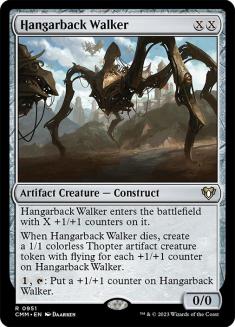
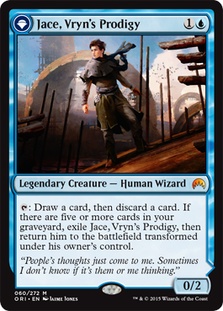
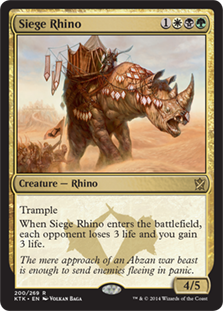
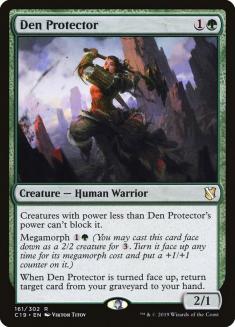
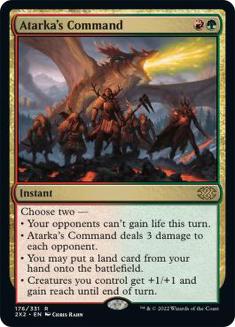
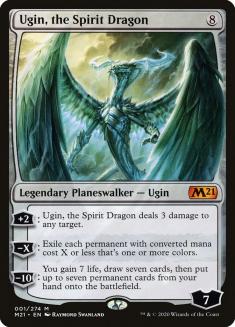
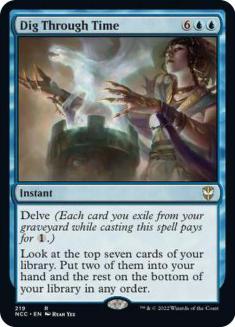
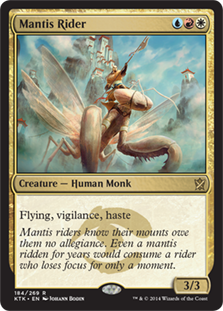
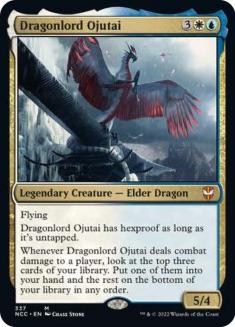
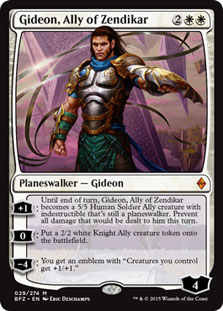

While there are only ten cards on this list, all of them are very powerful, difficult to counter in a timely and/or efficient fashion, and must be played
around in a disproportionate number of situations. If a deck contained, and could cast, all of these cards, I’m pretty sure it could never lose a game of
Standard Magic. Their singular power level is high enough that they disrupt the fun of trying to play the game how I like to. They’re the fun police. On
that note, what would the format be like if all ten of these cards were banned? Thought experiment!
Notice that lands are not present on this list. No land takes points away from the deck’s score directly; manabase creation is (or at least should be)
based on mathematical probability and thus is, by and large, a means to an end. However, unique, utility-oriented ones can give you points, and
expensive landbases can lose you points in the monetary cost department.
Factor #2: The Commonality of Cards
Abzan Charm is an uncommon from Khans of Tarkir. So is Temur Charm, and it’s even in the same cycle. One is better than the other, mostly due to
its favorable and more-frequently played color combination. That doesn’t make Temur Charm unplayable, it just means it is less commonly seen. This
is the distinction that comprises the second factor. The more likely a card is to be picked up by a skilled, experienced opponent to read, the more likely
it is to pass the commonality test. This is difficult to measure objectively, so it’s more of an “on-feel” basis. You’ll know them when you see them. You
gain a point for every card in your maindeck that meet this criteria. If you need something more concrete to see if a card fits, consider if the card is at
or near bulk pricing. If it is, it’s likely worth a point.
Factor #3: Deck Strategy Uniqueness
If you use more than a sentence to describe your deck, you’ll likely get some points in this category. Mono-Red Aggro decks can be described with their
name/archetype and most players will already know exactly how the deck works. B/U Aggro is less intuitive, and further explanation is often needed.
Complicated decks based around specific card synergy are the best. For calculating point values, common archetypes with uncommon color combinations
(admittedly subjective) get three points, while decks that center around a single card or synergies afforded by a specific combination of cards
get five points, such as decks based on Sphinx’s Tutelage or Hardened Scales. Again, you gotta feel this one out for yourself.
Factor #4: Monetary Cost
Only a certain cadre of players can spend large sums of money on the Magic decks they build. This is not a small number, as proven by the attendance
numbers at Modern and Legacy tournaments, where deck costs can easily break a thousand dollars. Standard is the biggest format for budget-conscious
players, and so this is perhaps most relevant for this format, but it can be extrapolated to Eternal Constructed formats. For every $50 you invest in your
deck, subtract one point. For Modern decks, subtract a point for every $100 in the cost of the deck, while Legacy decks can subtract a point for every $200
spent. This assumes the cheapest version of the card is bought, but this fact is only fiscally relevant in the Eternal formats. Round down to the nearest
increment.
So let’s see this scale in action using Standard as an example. As a benchmark for a popular deck with which many of you are likely familiar, let’s take a
list that’s seen success in one iteration or another: Todd Anderson’s Jeskai Black.
Creatures (16)
Planeswalkers (1)
Lands (26)
Spells (17)

Factor #1: -12 (4 Mantis Rider, 4 Jace, Vryn’s Prodigy, 2 Dragonlord Ojutai)
Factor #2: +0 (You could argue that all of Todd’s cards are familiar to the majority of competitive Magic players.)
Factor #3: +0 (Playing good cards for the sake of them being good is not terribly unique.)
Factor #4: -16 (Todd’s card cost, mainboard only, runs around $800 at the time I wrote this article.)
Total Score: -28
Todd built an excellent deck; you don’t play fifteen rounds of Standard to a top 4 finish without making an exceptional deck. However, as I score it,
Todd’s deck isn’t very fun. Winning games is fun, but again, that’s not all Magic is for me.
As another example, here’s Tom Ross’s Megamorph from the same week.
Creatures (24)
- 2 Wingmate Roc
- 4 Warden of the First Tree
- 1 Stratus Dancer
- 2 Hidden Dragonslayer
- 4 Den Protector
- 4 Deathmist Raptor
- 3 Nissa, Vastwood Seer
- 4 Hangarback Walker
Planeswalkers (3)
Lands (25)
Spells (8)

Factor #1: -13 (4 Hangarback Walker, 4 Den Protector, 3 Gideon, Ally of Zendikar)
Factor #2: +0 (Tom’s cards can all be mentally pictured and recited from memory, so I’d say there aren’t any points to give here.)
Factor #3: +3 (Tom has a megamorph strategy that he pursues to the exclusion of powerful cards, like Siege Rhino, that might easily fill in some of the
more questionable slots in his deck. Also, Deathmist Raptor as anything but a decent 3/3 for three requires some material synergy.)
Factor #4: -15 (Tom’s deck tips the scales at around $780 at the time of writing.)
Total Score: -25
Tom’s deck does a bit better, mostly thanks to its synergy elements. His deck is prohibitively expensive for most new players, which takes a bit of the fun
out of it.
Fine, Matt, so what do you like?
Well, here’s an example of a deck that does fairly well by the Higgs-West Scale of Standard Fun, courtesy of Joshua Dickerson and his win two weekends ago
at the St. Louis SCG Standard Premier IQ.
Creatures (14)
Planeswalkers (4)
Lands (26)
Spells (16)

Factor #1: -12 (4 Hangarback Walker, 2 Den Protector, 4 Ugin, the Spirit Dragon)
Factor #2: +24 (At least for now, the ramp strategy is still fairly new, and this is the strongest finish I’d seen for this archetype yet. Almost all
of his spells and nonbasic lands are unknown enough that even a seasoned player may need to double check what it does.)
Factor #3: +5 (Joshua’s deck is singular in focus and nearly every card is dedicated to this purpose. Ulamog, the Ceaseless Hunger and Ugin, the Spirit
Dragon are unapologetically the “build-around” cards for this deck.)
Factor #4: -6 (Joshua’s landbase costs around $13. The main cost contributors are his win conditions and Hangarback Walker. )
Total Score: +11
Joshua’s deck is innovative within the metagame, well-tuned, and really well-focused. His deck is, in fact, a whole lot of fun. Lots of people I
know have been working this angle, but Joshua’s list is probably the most streamlined (and successful) iteration I’ve encountered. As is the case with
every good innovation, though, it may encourage more and more players to play it, and this outlying deck could become mainstream. More and more Infinite
Obliterations could sneak into sideboards, and soon, this could be the format’s oppressive deck. All successful decks have the potential to go this way,
though most don’t. Time will tell.
How about another positive Standard example? This list is only partially mine; I’d like to give the bulk of the credit to ProgenitorX, a Reddit user who brewed up a fun list based around the undeniable fun and power of Assault
Formation. I ran into the list several weeks ago, and I’ve since made some adjustments and have been actively testing it.
Creatures (21)
- 4 Dragon's Eye Savants
- 4 Embodiment of Spring
- 4 Profaner of the Dead
- 4 Sidisi's Faithful
- 1 Benthic Infiltrator
- 4 Tide Drifter
Lands (22)
Spells (17)

Factor #1: -3 (3 Dig Through Time)
Factor #2: +31 (The entire creature base, the deck’s core card Assault Formation, and several of the little tricks to accompany it, are all uncommonly
played cards. The creature base is entirely unplayed.)
Factor #3: +5 (Let’s face it, this deck does not function without Assault Formation. It’s all-in on that strategy, and seven noncreature
spells out of fourteen possible help us find it.)
Factor #4: -3 (This deck runs about $160 as-is, but I only added the fetchlands and Battle lands because I had them. You could easily forego all of
them for more Lumbering Falls, Thornwood Falls, or other two-color lands to keep the cost low. Without the manabase, the spells and creatures don’t
cost a single point.)
Total Score: +30
Maximum fun engage!
ProgenitorX original list inspired me to tweak, create, and consider additional possibilities. The deck is a riot to play, as your opponent has so much
trouble dealing with such big rears, and the swings can be devastating. Assemble a team, wait for them to swing all, and then cast Assault Formation to
crash in for instant death.
That’s
what I call fun! Explosive, volatile, and decidedly unique!
There’s no question that, when considering tournament durability and worthiness, Todd and Tom’s deck have just about every other list beat. However, that’s
not the only metric of fun. Sometimes you just want to play weird cards, do weird things, all with a big ol’ grin on your face. Be your playgroup’sJackson Pollock, or surround yourself with Jackson Pollocks. You don’t have to win games of Magic to have fun. You just have to find what
makes you have fun and do that. Maybe the competitive nature of the game is what drives your fun, and that’s great; what’s important is finding what works
for you and understanding that finding a playgroup that feels the same way is the best way to enjoy the game.
END OF DISCLAIMER
What terms are in your contract? What keeps bringing you back to the game over and over? I wanted to cover Modern this week, too, so if you want some
perspective there, I can share that next week. How do your “for fun” decks line up under the West-Higgs Scale of Constructed Fun?


